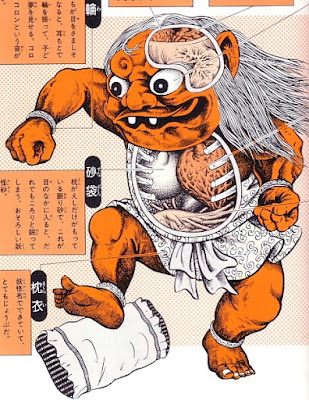This semester has taken a heavy toll on the energy and motivation I usually have to blog or write about anything. Which is unfortunate, since life continually offers up absurdities that are worthy of celebration on the internets. In my free time, however, I have been indulging in the holiday gaming season (which is exceptional, this year) and wanted to share some of my thoughts on one of the current blockbusters: Borderlands.
 Borderlands is a bad-ass game. And I don't want to sound like a fanboy here, since I think it suffers from some real issues as well - but playing this game is absurdly fun. Borderlands is a hybrid mix of a first-person shooter (FPS) and action role-playing game (RPG). I have a soft spot for action RPG's, even though I'm somewhat ashamed to admit that I jumped on the bandwagon rather late. I barely touched Diablo and Diablo 2, and my first real introduction to the genre was Gas Powered Games' Dungeon Siege (2002). I bought Dungeon Siege on a whim and expected to tire of it quickly. The basic principle of an action RPG is constant motion, combat, looting, and leveling. It's an RPG for people with ADD. There is only the merest whiff of any storyline, plot, or character development. It's almost heresy to call it an RPG at all (especially for those trained on Dungeons & Dragons, Baldur's Gate, etc.), since the "role-playing" elements are minimal. But every time you gib a troll and get a shiny new magic bow +200, you get this little dopamine burst in your midbrain that makes you want to keep playing.
Borderlands is a bad-ass game. And I don't want to sound like a fanboy here, since I think it suffers from some real issues as well - but playing this game is absurdly fun. Borderlands is a hybrid mix of a first-person shooter (FPS) and action role-playing game (RPG). I have a soft spot for action RPG's, even though I'm somewhat ashamed to admit that I jumped on the bandwagon rather late. I barely touched Diablo and Diablo 2, and my first real introduction to the genre was Gas Powered Games' Dungeon Siege (2002). I bought Dungeon Siege on a whim and expected to tire of it quickly. The basic principle of an action RPG is constant motion, combat, looting, and leveling. It's an RPG for people with ADD. There is only the merest whiff of any storyline, plot, or character development. It's almost heresy to call it an RPG at all (especially for those trained on Dungeons & Dragons, Baldur's Gate, etc.), since the "role-playing" elements are minimal. But every time you gib a troll and get a shiny new magic bow +200, you get this little dopamine burst in your midbrain that makes you want to keep playing.
Borderlands is all that and more. What makes it unique in the genre is the setting, its focus on guns instead of swords, and its first-person perspective. You're basically a bounty-hunter on an alien planet that feels very post-apocalyptic, and is inhabited by thousands of psychotic raiders, warlords, and mutant beasts. You job is to kill. Constantly. And periodically get stuff from those you kill. But mostly kill.

This maniac is coming right for me, with an axe no less, and I've got a sub-machine gun that sets you on fire. That's fucking insane, all right. The problem is that right behind him are 10 of his buddies, including at least 3 midgets with shotguns. This guy is just meant to distract me while lil' Mojo gets a beam on my head. Fortunately, I have several aces up my sleeve.
Borderlands is fundamentally about developing into a one-man (or one-woman) wrecking machine. As you progress through the game, completing quests and killing enemies, you gain experience and level up. Leveling brings new skills. Nothing new here. You also discover better and better loot, which is mostly composed of different guns. Borderlands has a clever random drop system that can generate a near infinite number of weapon combinations. For example, you might find a revolver that electrocutes your enemies but possesses a slow reload time. Or a rocket launcher than does corrosive (acid) damage to anyone caught in its blast radius. A central joy of Borderlands is collecting a wide array of weapons that you can draw upon for different tactical situations.
You'll note some serious color-coding going on. As with most action RPG's, the color indicates rarity. Blue is rarer than green, purple is rarer than blue, etc. In
Borderlands, you're hoping for orange and yellow items and you'll be lucky to see one after a dozen hours of play.
There are 4 characters to choose from: a brawler, a soldier, a sniper, and... Lilith. I love Lilith. She laughs gleefully when she crits some asshole in the head, and can enter an alternate dimension when shit starts getting out of control. Here's her skill tree:
If you're at all familiar with this kind of game, you basically already know what
Borderlands is all about. It's solid, mindless fun. But here's a list of things that I especially like and dislike about this particular game.
1. Leveling pace. The pace of leveling can make or break a game like this. Players don't enjoy dying all of the time, but they also want a challenge. The threat of death needs to be real, and it should happen if you play poorly and just rush into a battle without any kind of plan. If the game lets you level too quickly, you might find yourself out-matching every enemy you encounter.
Borderlands suffers from this problem to a certain extent. I made the mistake, on my first playthrough, of tackling lots of side-quests. It's that whole OCD thing, cleaning up your quest log and all. Unfortunately, by level 15 I was rolling over anything that came my way and the thrill of victory was reduced. I had to force myself to ignore side-quests from that point on and focus on the main storyline in order to give myself any challenge at all.
Borderlands does allow a 2nd playthrough at a higher difficulty level (it'll take you from ~ level 30 to ~ level 50) and the enemies are significantly more intimidating. Nothing like going up against a "Badass" alpha Skag who spits balls of lightning.
2. Loot pace.
Borderlands nails this one down. There are a shit-ton of loot drops, but you can quickly scan the ground for information on the weapons there and the color-coding system makes the good stuff really stand out. You'll find a really exciting weapon every 4-5 levels, which translates into several hours of play. This is a nice pace, since it allows you to become emotionally attached to certain weapons. I remember this lovely shotgun I found on my first playthrough that caused enemies to explode, and I just walked around for the next 20 minutes laughing as I one-shot killed everything in sight. I almost cried when I sold that gun to make more room in my inventory.
3. Skill-tree depth.
Borderlands is very focused on weaponry & equipment (think, grenades and shields) and less on skills. Or, I should say, active skills. Most of the character skills are passive which provide bonuses to certain kinds of attacks (melee, for example), accelerate healing, regenerate shields, etc. There is one active skill that each character can use - Lilith has her phase-walk, for example - but that's it. This is somewhat disconcerting at first, since you'll want access to a broader range of special attacks. But you'll get over it, because the gunplay is so entertaining and
Borderlands wants you to focus on that.
4. Presentation. A heavily touted feature of
Borderlands is its artistic style, which is "cel-shaded." It gives the game a lovely comic book presentation that is relatively unique in the PC gaming world (the closest comparison is 2003's
XIII).
5. Console-ness. It is clear that
Borderlands was first and foremost designed for the Xbox360 and PS3. This isn't exactly a "port" but it sometimes feels like one. My two biggest quips are the following. There's no storage system for loot beyond your personal inventory. I would like to be able to easily transfer loot between my characters, for example, by having access to a shared storage area. This is a common feature in most action RPG's and it's needed here as well. I also would like to ability to cancel quests from my quest log. As is, it gets cluttered in a hurry, making it more difficult to focus on those that are most important.
6. Vehicular combat. I was excited to hear rumors that
Borderlands also featured some
vehicular combat, but the fact of the matter is that it is a relatively minor aspect of gameplay. Your character will use a car, often, for quick travel around the map - and you can even run over enemies for easy XP. There are a few quests that feature vehicle-vs-vehicle combat, but it feels silly and unsatisfying, especially when compared to the visceral and challenging gunplay.
7. Humor.
Borderlands definitely has a sense of humor and you can see it in the environment and in some of the characters you'll meet. Scooter has some lines that will make you grin. It should be noted that this is not a G-rated game; in addition to the massive, constant bloody violence, there is a fair amount of cursing as well.
8. Death penalty & checkpoints. The above screenshot shows you what happens immediately after death. Your body is reconstructed at the nearest checkpoint and you're charged a fee. The system works decently well, since checkpoints in
Borderlands are spaced regularly. However, if you quit the game and reload later, you won't start at a mid-level checkpoint - the game will force you to start at the entry-point for that particular area. This is a tad frustrating and there were a couple times that I cursed Borderlands for this. It's another symptom of its console-ness.
9. Second wind.
Borderlands includes several clever features that kick in when your character loses all their health. For one, if you're playing cooperatively with friends, one of your buddies can come over and revive you. They have only a few seconds to do this before you die, but it creates some great tension and teamwork that otherwise might not exist. If you're playing solo, you can also recover on your own by killing an enemy before your vision goes totally black. At this point, you'll get a "second wind" and recover your shield and a little health. Often, this is enough for you to run away, recover, come back and clean up. I've had some amazing second winds playing
Borderlands, and they really are brilliantly fun gaming moments.
10. Tactical depth. When
Borderlands is challenging, it presents a surprising amount of tactical depth, especially if you're going solo. Rushing into a situation without a plan will likely get you killed, and a slow, deliberate approach is rewarded. For example, I like to pick off sentries with my sniper-rifle before I jump into a nasty raider-camp. I'll then toss a couple grenades that rain electricity to strip my opponents of their shields, and follow that up with a corrosive rocket so they're already taking significant acid damage when I finally show myself. At this point, my primary attacks are SMG and shotgun, both highly effective when in close-combat. If my shield dips too low, I'll immediately phase-shift and either sneak attack their toughest mofo or find a quiet place to regenerate. Cover plays a central role in
Borderlands and if you use it to your advantage, you can win any fight. Your enemies will often use it effectively as well, requiring that you come up with a flanking strategy on-the-fly. All of this back-and-forth is very rewarding and makes
Borderlands much more satisfying, I think, than a straight-up hack & slash dungeon crawler.
On a final note,
Borderlands can be played solo or cooperatively with up to 3 other players online. I have had a stellar time playing by myself, and appreciate being able to go at my own pace, read all the quest info without feeling pressured by other players, and hoarding all the loot drops for myself. I have also dipped into cooperative play online and it's got some perks: the enemies are tougher, the loot is better, and you get to see the other characters in action. But playing with a random PUG (pick-up group) is always a hit-or-miss situation. My assessment of the fun-rating of this game is that it is best when played coop with friends, 2nd best played solo, and 3rd best played with strangers. Recommended to satisfy your holiday season lust for (virtual) blood.
 Another example of this is Battlestar Galactica. After the Cylon attack on the colonies, less than 50,000 humans survive, instantly making us an endangered species. The value of an individual human life skyrockets, which means that you have to learn to put up with idiots, pricks, and sadists. I mean, in any sane galaxy (with billions/trillions of humans), no one in their right mind would let Saul Tigh near a car much less XO a battlestar. But beggars can't be choosers.
Another example of this is Battlestar Galactica. After the Cylon attack on the colonies, less than 50,000 humans survive, instantly making us an endangered species. The value of an individual human life skyrockets, which means that you have to learn to put up with idiots, pricks, and sadists. I mean, in any sane galaxy (with billions/trillions of humans), no one in their right mind would let Saul Tigh near a car much less XO a battlestar. But beggars can't be choosers..jpg)























































